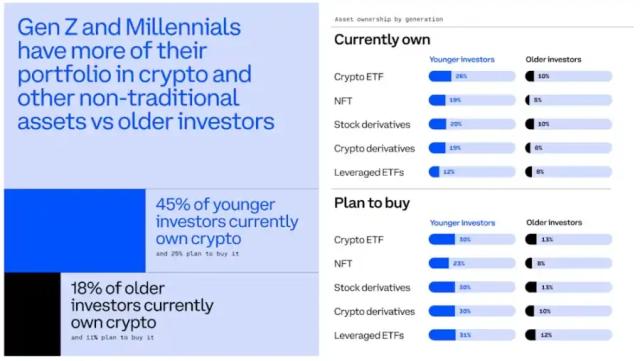BTC đã liên tục điều chỉnh hồi và ở mức gần 92.000, nhưng các tổ chức đang mua hàng đi ngược lại xu hướng.
Bài viết này được dịch máy
Xem bản gốc
Do to the rise in US bond yields and investors adjusting their expectations for the Federal Reserve's monetary policy, the US dollar index (DXY) broke a new high, and the cryptocurrency market has been adjusting for the second consecutive day.
CMC data shows that over the past 24 hours, BTC briefly fell to a low of $92,600 during the session, and as of the time of writing, it has rebounded to around $94,400, still down 2.1% over the past 24 hours, while Ethereum fell to around $3,330.
This trend is closely related to the strong economic data released in the US, including a surge in job vacancies and better-than-expected manufacturing performance. These data further consolidated the view of Federal Reserve Chairman Powell that aggressive rate cuts may not be necessary this year to effectively control inflation. "Fed mouthpiece" Nick Timiraos pointed out that the minutes of the Federal Reserve meeting released today further indicate that officials generally want to keep interest rates unchanged at the meeting at the end of this month. The market has therefore adjusted its expectations for the Federal Reserve's future monetary policy, and risk assets have come under pressure and fallen.
CoinGlass data shows that the two-day pullback has led to the liquidation of nearly $1 billion in crypto leveraged derivative positions, mainly long positions betting on the upside.
Macro economy and policy expectations dominate market sentiment
This pullback in Bitcoin prices reflects the market's correction of its previous optimistic expectations for Bitcoin. The previous optimism was mainly based on two assumptions: one is that the Federal Reserve will adopt a more accommodative monetary policy, i.e. actively cut interest rates; the second is that if Trump is re-elected as US president, it is expected to bring a clearer regulatory framework for the cryptocurrency industry. However, the current economic data and the Federal Reserve's stance have led the market to doubt the realization of the above two assumptions.
Swarm Markets co-founder Philipp Pieper pointed out that in the absence of new market narratives to drive it, the cryptocurrency market is gradually returning to the logic of the traditional financial market. When interest rates are low, investors usually tend to increase their allocation to risky assets (such as cryptocurrencies and tech stocks) in search of higher returns. But currently, due to the uncertainty around the Trump administration's cryptocurrency policy, the market sentiment is more cautious, and this uncertainty is expected to last for some time.
The analysis report of 10x Research also emphasizes the importance of macroeconomic data to Bitcoin prices. The report believes that the Federal Reserve's response to US economic data and global liquidity conditions are the two key macroeconomic factors affecting the trend of Bitcoin prices. In the short term, Bitcoin prices may enter a period of violent fluctuations, a "banana zone" due to these factors. The "banana zone" vividly describes the turbulent trend of asset prices under the joint action of macroeconomic factors.
BitMEX founder Arthur Hayes also analyzed the impact of US dollar liquidity on Bitcoin prices in his latest blog post, arguing that Bitcoin and cryptocurrency prices usually rise when US dollar liquidity increases.
Over the past 30 days, institutional investors have accumulated more than 34,000 Bitcoins
Although the market is facing adjustment pressure in the short term, analysts remain optimistic about Bitcoin's long-term prospects. On-chain data from CryptoQuant shows that the "potential demand for Bitcoin remains very strong" in the market. The institution measures market demand by comparing the decrease in idle Bitcoin to the increase in new Bitcoin supply from miners, and when the decrease in idle Bitcoin far exceeds the new supply, it indicates strong market demand.
CryptoQuant analyst wrote that around December 21, 2024, institutional investors had sold about 79,000 Bitcoins in a week, leading to a 15% market correction. However, large institutions subsequently used the market consolidation period to continue buying below $9,500 using a time-weighted average price (TWAP) strategy. Over the past 30 days, institutional investors have accumulated more than 34,000 Bitcoins, providing buying support for the recent rebound in Bitcoin.
Although there have been adjustments in institutional portfolios, the trend of on-chain Bitcoin accumulation has remained clear since June 2023. This indicates that despite retail demand being at a five-year low, institutional investors' interest in Bitcoin remains high.
CryptoQuant's analysis also shows that the Bitcoin pullback has significantly reduced traders' unrealized profits, which is a normal phenomenon after a sharp rise, and currently the traders' realized price is around $88,000 (usually providing price support in a bull market).
Historical data shows that in January following the past two US presidential elections, Bitcoin has experienced pullbacks, with declines of 36% in January 2017 and January 2021.
Real Vision's chief crypto analyst Jamie Coutts commented on the X platform: "With the US dollar strengthening becoming a real issue, I had expected Bitcoin to be around $80,000 by now, but it hasn't fallen that much, which shows the strength of the underlying bid and the market's expectation that the Fed will have to act; otherwise things will start to deteriorate. Regardless of how events unfold, more liquidity is on the way, and Bitcoin should be much higher in 6 months."
In summary, the recent pullback in Bitcoin is mainly influenced by macroeconomic data and changes in expectations for Federal Reserve policy. In the short term, the market may still maintain a volatile pattern. However, the continued accumulation by institutional investors and the strong demand reflected in on-chain data will provide support for the long-term trend.
Khu vực:

Nguồn
Tuyên bố từ chối trách nhiệm: Nội dung trên chỉ là ý kiến của tác giả, không đại diện cho bất kỳ lập trường nào của Followin, không nhằm mục đích và sẽ không được hiểu hay hiểu là lời khuyên đầu tư từ Followin.
Thích
Thêm vào Yêu thích
Bình luận
Chia sẻ
Nội dung liên quan







